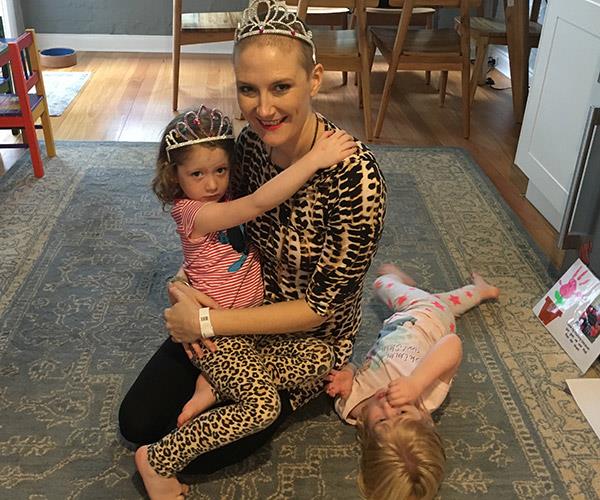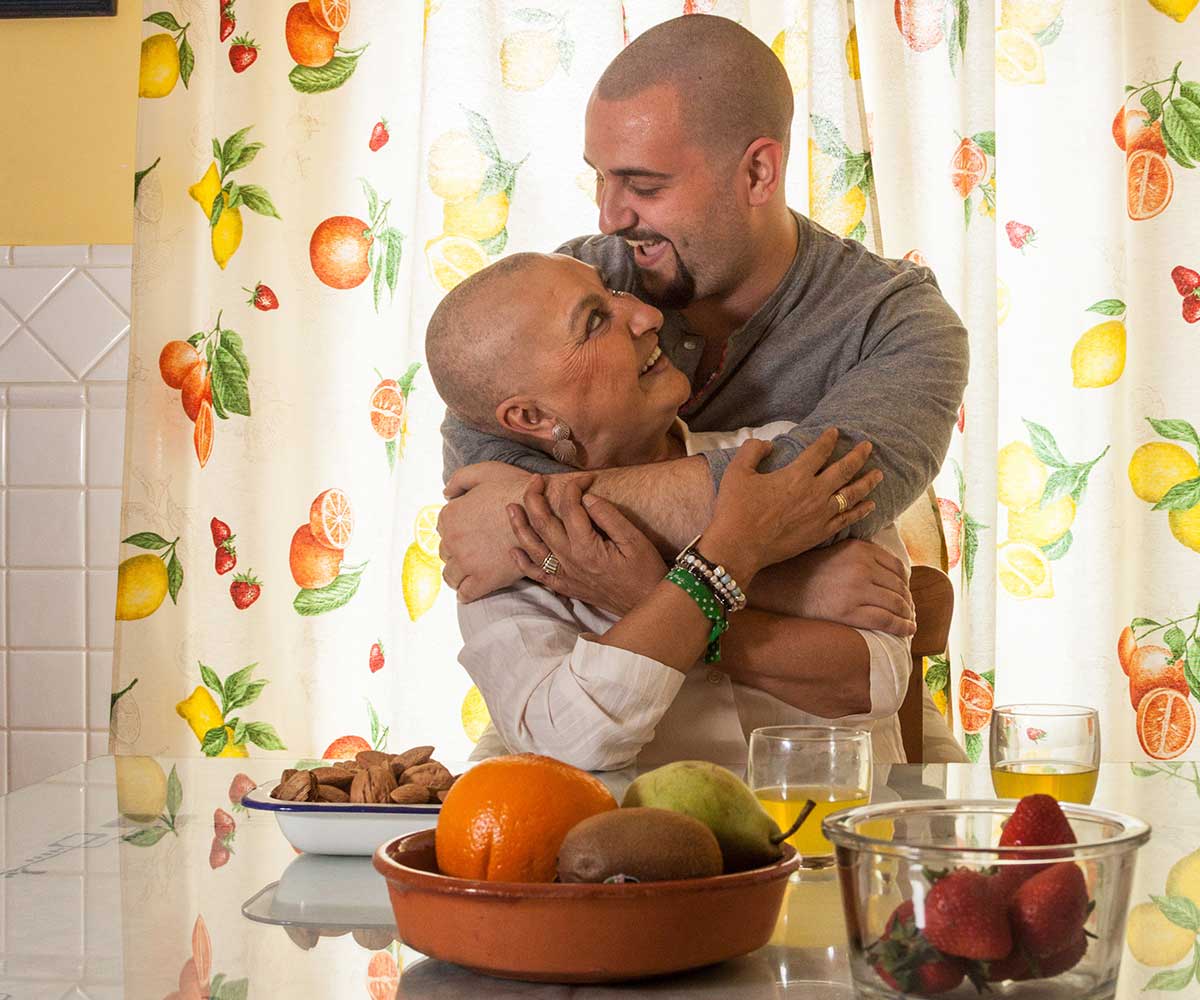It’s the most fatal gynaecological cancer in New Zealand, taking the life of one Kiwi woman every 48 hours, and with more than 50 per cent of the community incorrectly believing a pap smear can detect it, awareness is more crucial than ever.
Lisa Finucane, a survivor of ovarian cancer admits to Now To Love that before she was diagnosed she didn’t even know ovarian cancer was a thing; let alone what symptoms to look out for.
Now, years after fighting the disease she is a passionate spokesperson for Ovarian Cancer New Zealand, a website she co-founded with two other New Zealand woman as a way to address key issues around ovarian cancer such as raising awareness of symptoms among both women and General Practice medical staff, lobbying for funds for drugs and research, and advocating and supporting women with the disease.
Lisa Finucane says she didn’t even know ovarian cancer was a thing before she was diagnosed. (Image: Supplied)
Now To Love talks to Lisa about her journey, the importance of raising awareness, and how we can do our part to aid the funding of much needed research.
How much did you know about ovarian cancer before you were diagnosed?
I don’t think I even knew ovarian cancer was a thing, and certainly not what the symptoms were.
My GP said that my ovaries were a little swollen (she did not pick this up from the smear but from the internal exam during my annual check) and I should get an ultrasound when I had my next mammogram, but I didn’t have a sense of urgency or rush to get things checked.
Afterwards she said that she was thinking it might have been something like endometriosis (she’s an excellent doctor and certainly wasn’t disregarding any symptoms). If ovarian (or any sort of) cancer had crossed my mind I’d have been getting things underway the next day.
What alerted you to the signs that something might be wrong?
I was a bit unusual in that the GP noticed something before I had any symptoms. But over the next month or so I was aware of bloating and not being hungry or being able to eat much.
I took the not eating as a bit of a bonus and thought it might have been because I was busy at work. It was when I got to the stage of getting to close of business and realising I’d had a cup of tea in the morning, a couple of coffees during the day and a glass of wine after work but didn’t feel hungry, that I guessed something might be up – but ovarian cancer didn’t cross my mind.
Re the bloating – I was in my late 40s and having lived life with absolutely no monthly bloating or cramps or anything, I thought that perhaps I was going to be hit with everything as I approached menopause.
What are other symptoms women should look out for?
The trouble with ovarian cancer is that the symptoms can be vague, and they can be similar to other things that women experience – both as part of normal life (like menopause) or other conditions (endometriosis or IBS or even an infection).
But broadly speaking, symptoms include bloating, feeling full, pain in your abdomen, pelvis, or back, and needing to pee more. Other symptoms might include indigestion, painful intercourse, tiredness, unexpected weight loss, changes in bowel habits, and abnormal bleeding.

Lisa, six years ago, when she was undergoing chemotherapy. (Image: Supplied)
Ovarian cancer can sometimes have no symptoms at all, what avenues are there in terms of tests for early detection?
There isn’t a test for early detection although women with a family history of ovarian or breast cancer are increasingly being tested for the BRCA gene and in this case, medical professionals should be keeping a close eye.
The best detection is listening to what your body is telling you, and if you’re concerned, talk to your GP and ensuring he or she takes ovarian cancer seriously as a possible cause. Some DHBs have introduced the idea of a patient journal which means women can record symptoms – that’s a good way for both women and their GPs to really take note of what is going on.
Pap smears do not detect ovarian cancer [they are used to detect cervical cancer]. An ultrasound with a blood test (ca125) is the only way to be sure.
On their own, ultrasounds can miss some strains and blood tests alone often miss early cancer. However, I appreciate that there are costs associated with prescribing ultrasounds when the reality is the majority of women with the symptoms I mentioned won’t have ovarian cancer.
This is something the health industry has to balance and one of the reasons that an effective and accessible diagnostic test (like a mammogram for breast cancer or a smear for cervical cancer) would be so useful.
What are the treatments options available?
Like all cancers, the earlier you catch it the better the prognosis, and because ovarian is hard to pick up in its infancy, diagnosis often happens in stages 3 or 4. My particular strain doesn’t respond well to chemotherapy – although I have had two rounds of it after different operations.
‘Debulking’ or cutting out the cancer where possible is a good treatment – among other procedures so far, I’ve had a hysterectomy, a splenectomy, and a section of my liver cut out. I’m also on a hormone therapy drug.
There are drugs that attack ovarian cancer tumours (PARP inhibitors and Avastin) that are used overseas with good results, but which aren’t funded in New Zealand – we live in hope.
Unfortunately, there isn’t a lot of research (relative to other cancers) and that’s what’s needed to find the ways to improve the lives of women with ovarian cancer, slow the progress of the disease, and ultimately find a cure.

Symptoms can include anything from bloating, feeling full, pain in your abdomen, pelvis, or back, and needing to pee more. Other symptoms might include indigestion, painful intercourse, tiredness, unexpected weight loss, changes in bowel habits, and abnormal bleeding. (Image: Getty)
You’ve helped initiate Ovarian Cancer New Zealand, can you talk a little about the website and what motivated you to create it with Rachel and Jane?
I was fortunate to connect with two amazing women who are also committed to addressing some of the key issues around ovarian cancer – such as raising awareness of symptoms among both women and General Practice medical staff, lobbying for funds for drugs and research, and advocating and supporting women with the disease.
Jane was just 32 when she was diagnosed – but had been experiencing symptoms for more than a year. The medical people she consulted – from GPs to surgeons – said her symptoms weren’t cancer and didn’t investigate appropriately.
Rachel co-founded the NZ Gynaecological Cancer Foundation after her mother died of ovarian cancer in 2006. She moved on to set up the Ovarian Cancer Support Group, a closed Facebook group that connects more than 100 women with ovarian cancer across Aotearoa New Zealand, and a wider group – Ovarian Cancer Awareness NZ – for nearly 1400 friends and family.
They are both real powerhouses and so committed to this work.
There didn’t seem to be one place where up-to-date, myth-free information about ovarian cancer could be found. We wanted a website by women and for women.
How can people help raise awareness and support the research?
Wednesday 8 May is World Ovarian Cancer Day – I hope there will be plenty of women out wearing white shirts and that means that they know the symptoms of ovarian cancer and how to act on them.
The Witchery White Shirt campaign in conjunction with Australia’s Ovarian Cancer Research Foundation is raising awareness of symptoms and money for research on an early detection test for ovarian cancer that is as readily available as a pap smear or mammogram. And that would be a wonderful tool for New Zealand women too.

Witchery and Australia’s Ovarian Cancer Research Foundation have teamed up for their eleventh year for White Shirt Day, to raise awareness and funds for early detection research on ovarian cancer. (Image: Supplied)
Fashion retailer Witchery is working with Australia’s Ovarian Cancer Research Foundation to bring the Witchery White Shirt Campaign to help raise awareness about ovarian cancer, while raising money to fund much needed research.
From April 11 Witchery will be selling a collection of eight white shirts across Australia and New Zealand which people can purchase in-store or online to wear on May 8th. For every white shirt sold, Witchery will donate 100 per cent of gross proceeds to the OCRF.
The campaign, which has run for more than a decade has helped to raise $12.1 million, but there’s still a lot of work to be done.
 Getty Images
Getty Images

